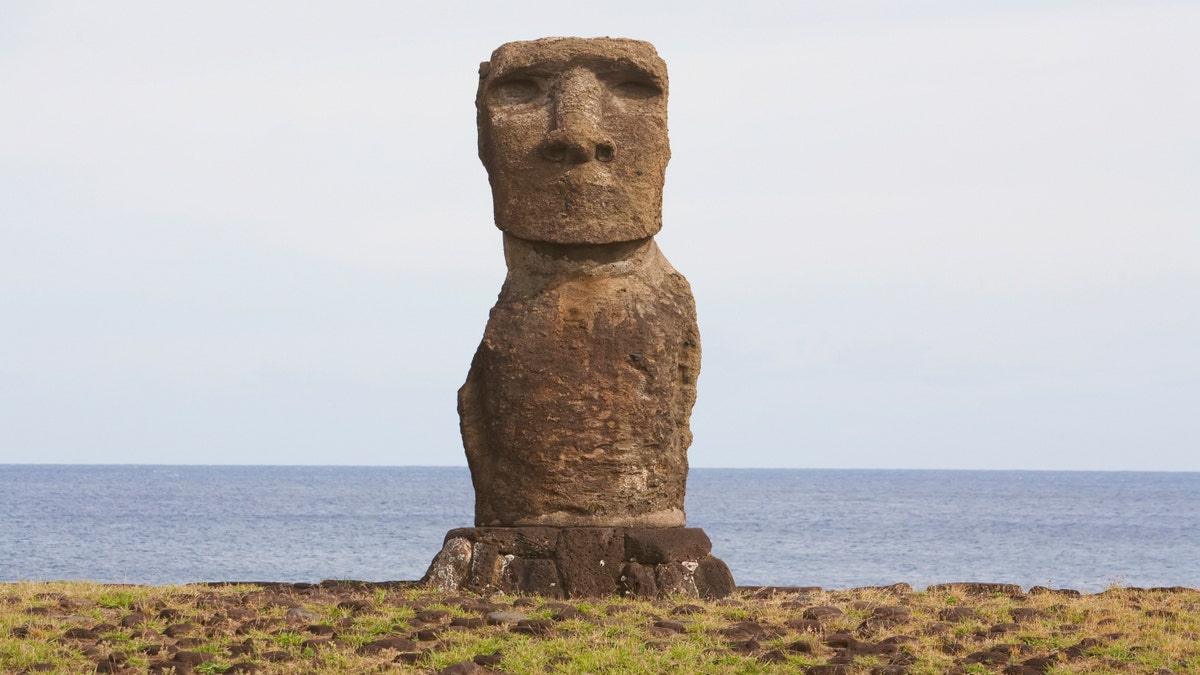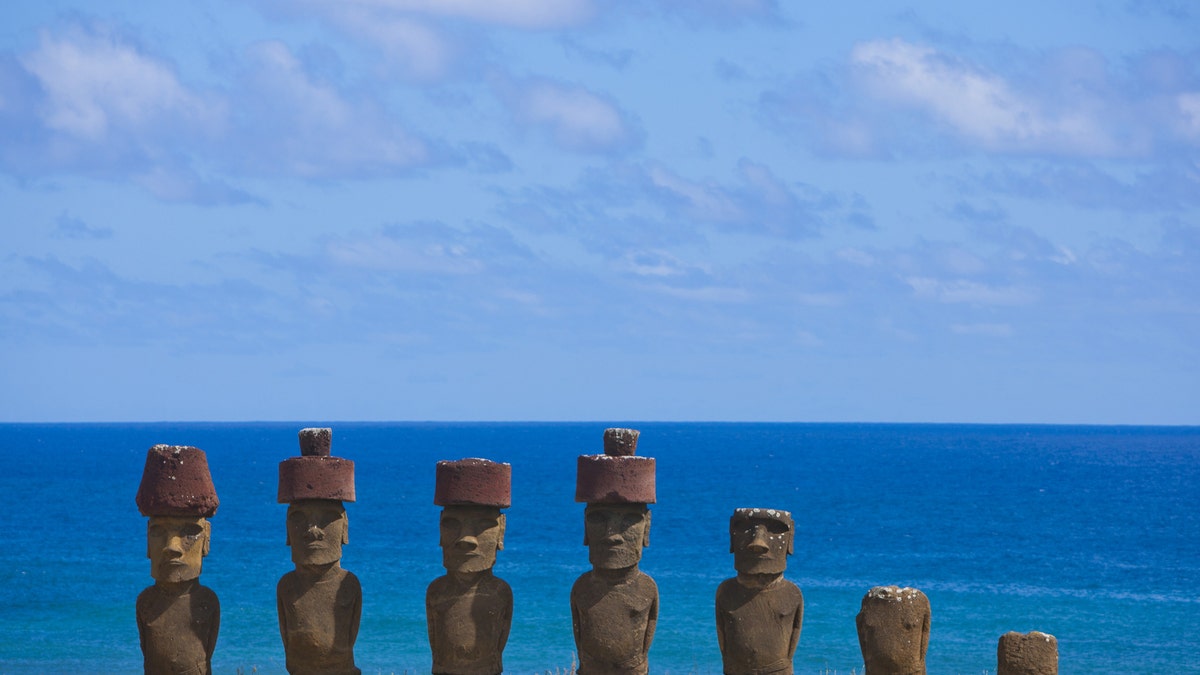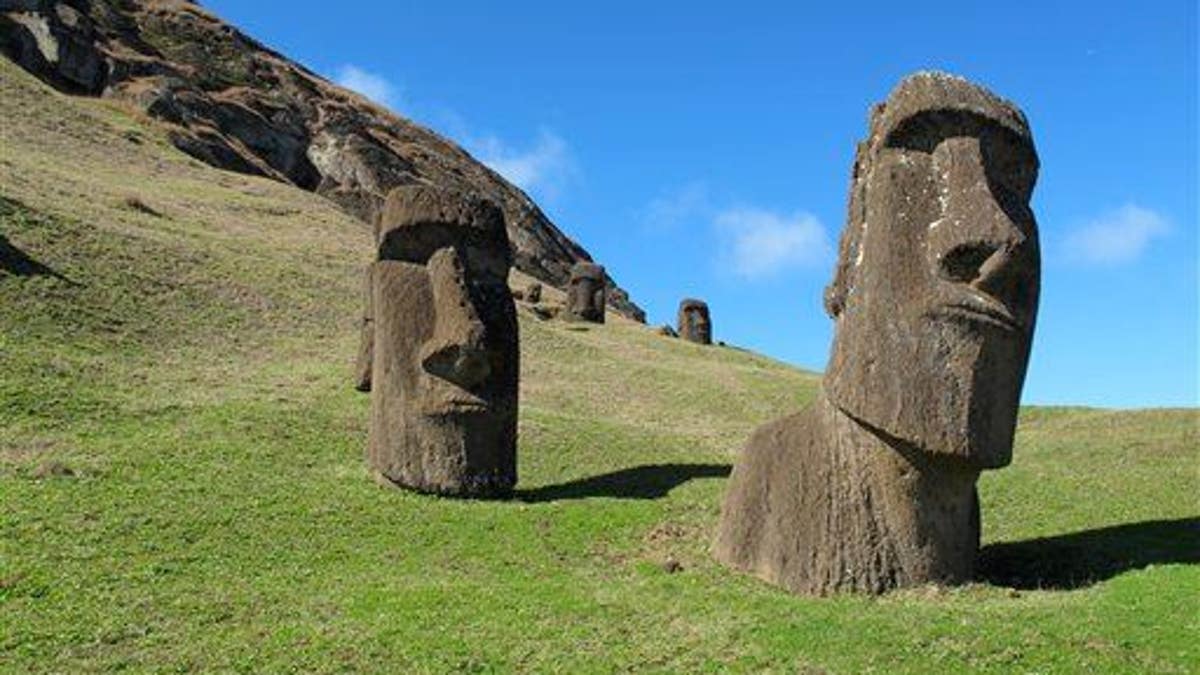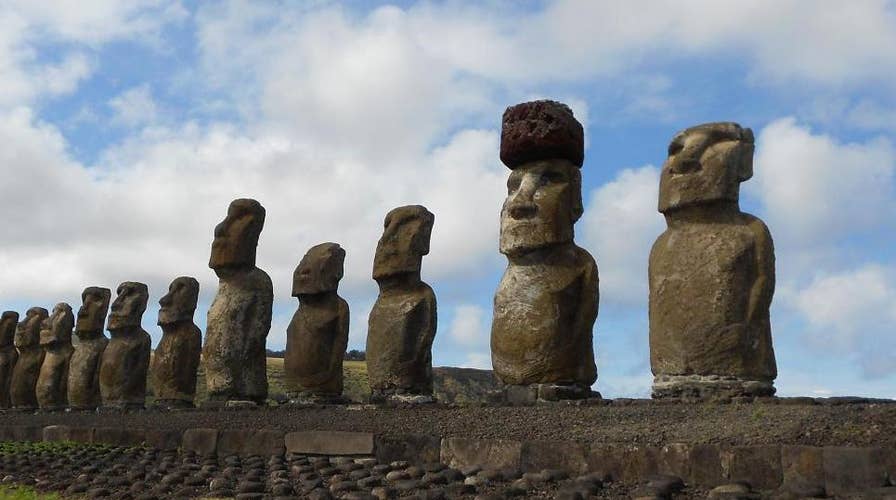Easter Island mystery solved?
Researchers say they figured out how the ancient people of Easter Island put 12-ton hats on the mysterious statues.
Historians have long wondered why Easter Island’s famous statues are mostly located on the coast of the remote Pacific island – now a team of archaeologists has come up with an answer.
Researchers, including experts from Binghamton University, State University at New York, have shed new light on why the ancient statues are placed along the island’s coast. Around 900 statues, or moai, are dotted around Easter Island.
The team discovered that, with little freshwater available on the island, islanders likely relied on groundwater discharge in coastal areas as their main source of drinkable water.
EASTER ISLAND MYSTERY SOLVED: HOW HUGE STONE 'HATS' WERE PLACED ON FAMOUS ANCIENT STATUES
"Now that we know more about the location of freshwater, however, the location of these monuments and other features makes tremendous sense: they are positioned where freshwater is immediately available," said Binghamton University Professor of Anthropology Carl Lipo, in a statement.

Moai At Hanga Kio'e, Rapa Nui (Easter Island), Chile (Photo by: Insights/UIG via Getty Images)
Lipo notes that the porous volcanic soil of Easter Island quickly absorbs rain, resulting in a lack of rivers and streams. "Fortunately, water beneath the ground flows downhill and ultimately exits the ground directly at the point at which the porous subterranean rock meets the ocean,” he said. “When tides are low, this results in the flow of freshwater directly into the sea. Humans can thus take advantage of these sources of freshwater by capturing the water at these points."
The research is published in the Hydrogeology Journal.
EASTER ISLAND'S ANCIENT CIVILIZATION WAS NOT DESTROYED BY WARFARE, EXPERTS SAY
Easter Island, or Rapa Nui, contains two lakes that are difficult to access, no streams and just one spring that is “often reduced to a wetland bog,” according to researchers. There are, however, small carved-out cisterns for collecting rainfall, called “taheta,” although the study notes that these can only collect relatively small amounts of water – between 2 and 4 liters each.

File photo - Statues at Anakena Beach, Easter Island, Chile. (Photo by Eric LAFFORGUE/Gamma-Rapho via Getty Images)
Researchers estimate that with just 49 inches of annual rainfall, coupled with an evaporation rate driven by the island’s climate, taheta could not be viable sources of drinking water for 317 days out of the year.
In the first European accounts of Easter Island, the islanders appear to “drink seawater.” Given that the human body cannot process the high salt content of seawater, researchers believe the accounts are likely a reference to groundwater discharge on the island’s coast.
PART OF EASTER ISLAND MYSTERY SOLVED
"This information ultimately sheds light on the conditions that drove and enabled these communities to work together to achieve their feats of engineering," Lipo said. "By gaining knowledge about community scale behavior, we can gain insights into the general conditions necessary for group-level cooperation -- whether in the past or in contemporary society."

This August 2012 photo shows heads at Rano Raraku, the quarry on Easter Island. (AP Photo/Karen Schwartz)
In the next stage of the research, experts will examine how the availability of freshwater in certain areas is linked to the methods and means of building the statues.
The remote Pacific island, which is located more than 2,000 miles off the coast of Chile, continues to be a source of fascination for historians. Earlier this year, researchers, including experts from Binghamton University, worked out how ancient islanders were able to place massive stone hats on the statues.
EASTER ISLAND'S DEMISE MAY HAVE SURPRISING NEW EXPLANATION
In 2016, research conducted on artifacts from the island questioned the theory that the ancient civilization there was destroyed by warfare.
Experts, also from Binghamton University, studied hundreds of ancient items found on the shores of Easter Island. Previously, the artifacts were thought to be spear points, but analysis reveals that they were likely general purpose tools.
Carved from obsidian, or volcanic glass, thousands of the triangular objects, known as mata'a, litter the surface of the island.
Some scientists have estimated, that, at its height, Easter Island’s population may have been as high as 20,000, but fell over centuries after the island’s trees and palms were cut down to build canoes and transport its famous giant statues. One theory suggests that the deforestation led to soil erosion, impacting the island’s ability to support wildlife and farming, and the collapse of its civilization.
When the Dutch arrived at the island in 1722, its population was 3,000 or less. Only 111 inhabitants were living on Easter Island by 1877.
However, other experts have questioned whether Easter Island ever supported a large population, citing instead the arrival of Europeans, who brought diseases and took islanders away as slaves.
Follow James Rogers on Twitter @jamesjrogers





















